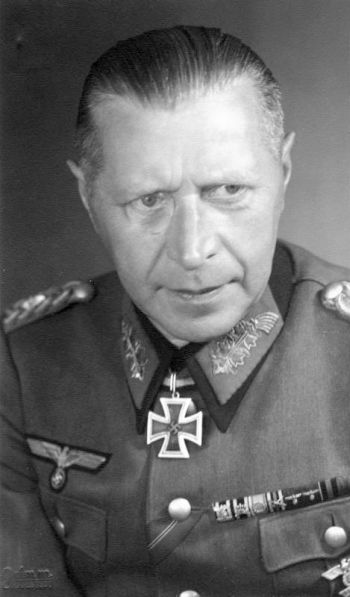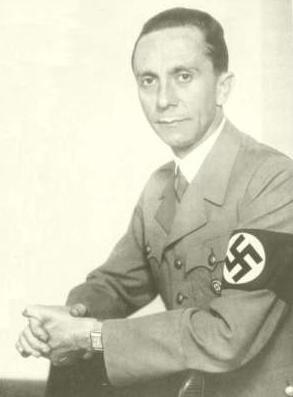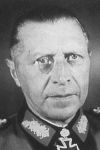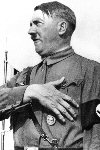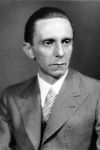Now It Can Be Told! - Goebbels Tried to Make Peace Terms
The War Illustrated, Volume 9, No. 214, Page 269, August 31, 1945.
As the Nazi Reich lay in its death agonies, Goebbels offered to play Judas to his master, Adolf Hitler, and take over the leadership of a reorganized German Government which would conclude an armistice with the Soviet Union. This was revealed to me here tonight (Berlin, July 23, 1945) by Lt.-Gen. Peter Kosenko, Chief of Artillery in the late Col.-Ge. Nikolai Berzarin's Fifth Russian Striking Army, which played the lion's part in storming Berlin. It is the first time that any Allied correspondents have been given a complete picture of the savage battle for Hitler's capital by senior Russian officers who themselves took part in the fighting.
At midnight on April 30, with fighting for Berlin at its fiercest, a small group of Nazi officers under a flag of truce presented themselves to the Soviet H.Q. in the southern part of the local Gestapo H.Q. in Friedrichstrasse. Their senior officer said he came from General of Artillery Weidling, Commander-in-Chief of all German forces in Berlin, who had authorized him to ask for an armistice between the Russian Government and a German Government under the leadership of Dr. Goebbels.
No mention was made of what would become of Hitler, but the inference was that he had already left Berlin, was dead, or would be handed over to the Russians, alive or dead, if they agreed to this suggestion. In this connexion it is interesting to recall that Goebbels was always reckoned as the leader of the "Eastern" wing of the Nazi party, which favoured reconciliation with Russia and switching all Germany's resources against the Western Allies.
The answer of the Soviet High Command was immediate and uncompromising; "Unconditional surrender – or else..." The Germans returned to their lines and all that night and the next day the battle raged. During the night of May 1, Hitler's Chancellery was finally stormed after bloody hand-to-hand fighting, and with the first light of May 2, General Weidling broadcast an order to all German troops in the Berlin area to lay down their arms.
The battle for the city divides itself into two phases: the encirclement of Berlin, which took five days, and converging attacks into the centre of the city from the south, north-west and east. All organized resistance was ended by May 2, but mopping up of small groups of desperados and franctireurs who held out in various parts of the city, especially the suburb of Spandau, lasted until May 10.
The Germans had prepared the city thoroughly and cleverly for defence. They had two S.S. Tank divisions, two Volkssturm divisions and the remnants of S.S. and Wehrmacht units withdrawn from the Oder front. These were concentrated inside the Berlin trap and they were prepared to defend each house until it fell in ruins.
Population Cowered Underground
The Russians therefore organized their forces in special small "storm groups" for street fighting, each supported with tanks and artillery both light and heavy. According to General Kosenko, everything at that time was so mixed up that some of their light artillery was firing from the outer suburbs of Berlin while heavy guns were in action over open sights. Tanks were used wherever possible, but it was predominantly an infantry and artillery battle.
During most of the battle the civilian population remained cowering underground, dying in hundreds beneath the falling ruins of their houses. Many of them, however, emerged in the Russia rear and began sniping with rifles and bazookas. These were shot out of hand by special Soviet units detailed to deal with this nuisance.
Berlin seemed to be on fire everywhere, General Kosenko said. Smoke was so thick that visibility was sometimes less than 50 yards. German corpses were piled in streets that were almost impassable mazes of debris and fallen masonry. Big explosions rocked the city and sent columns of fire forking skywards as Russian aircraft and artillery exploded ammunition dumps which the Nazis had piled in the city's centre. It was here, at the crossing of the River Spree, and during the attack on the Chancellery and Air Ministry buildings in Unter den Linden that the struggle was fiercest.
This fighting was described by Maj.-Gen. Vladimir Antonov, the man who defended and saved Grozni's Caucasian oilfields from the Germans in 1942. The battle for the Chancellery began on April 27 after the River Spree was crossed, he said. This extremely difficult operation was carried out on rafts in face of murderous German fire at close range.
The Chancellery area itself was especially well held exclusively by S.S. men armed with tanks, self-propelled guns and a new submachine-gun the Germans were trying out for the first time. The defenders collapsed at the last and surrendered en masse.
General Kosenko said there was no evidence whatever to prove conclusively that Hitler was in the Chancellery during the battle. He was certainly not there when Gen. Antonov's troops came in. Aircraft had been seen taking off from Charlottenburger Chaussee during the last days, but nobody could identify the type or say who were the passengers. The riddle of Hitler's fate remained unsolved. – Ossian Goulding, condensed from The Daily Telegraph.
Previous and next article from Now It Can Be Told!
Now It Can Be Told! - How Royal Marines Hacked a Base From Jungle
The dramatic story of another secret war port was revealed by the Admiralty in July 1945. It is the story of "Port T" – a naval base with full defences – hacked out of the jungle on Addu Atoll, a
Now It Can Be Told! - Eight Men to Guard the King
When this country faced invasion, after the withdrawal of the B.E.F. from France by way of Dunkirk, in 1940, prompt and serious consideration had to be given to the safety of Their Majesties and the t
Index
Previous article
Now It Can Be Told! - How Royal Marines Hacked a Base From Jungle
The dramatic story of another secret war port was revealed by the Admiralty in July 1945. It is the story of "Port T" – a naval base with full defences – hacked out of the jungle on Addu Atoll, a
Next article
Now It Can Be Told! - Eight Men to Guard the King
When this country faced invasion, after the withdrawal of the B.E.F. from France by way of Dunkirk, in 1940, prompt and serious consideration had to be given to the safety of Their Majesties and the t


